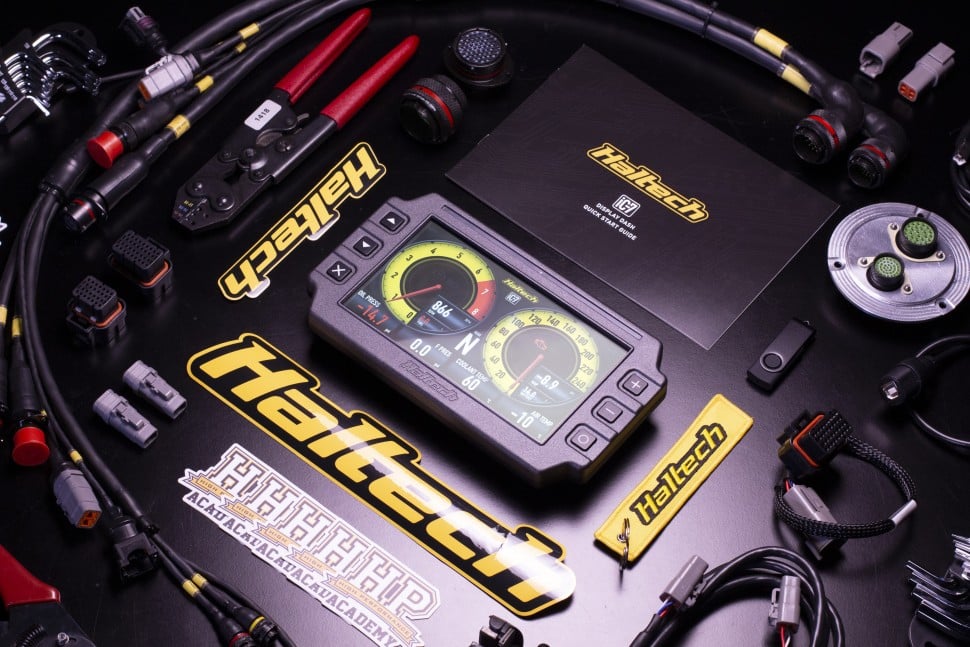| 00:00 |
In this section of the course we're going to be discussing the real world influences affecting aerodynamics.
|
| 00:05 |
So let's get started with pressure gradients and flow separation.
|
| 00:08 |
In the previous section we discussed the Coanda effect.
|
| 00:12 |
I said that air has a tendency to follow the surface that it's blowing over.
|
| 00:16 |
However, that isn't always the case.
|
| 00:19 |
In some conditions we can end up with what's known as flow separation, where flow no longer stays attached to the surface and splits away.
|
| 00:28 |
This is an extremely common situation on race cars and is present anywhere where we experience very high levels of curvature.
|
| 00:36 |
You might have heard flow separation referred to as stall, which is mainly the concept when it's applied to wings.
|
| 00:43 |
The root cause of flow separation is what's known as the adverse pressure gradient.
|
| 00:49 |
What this means is that the flow pressure downstream is higher than the flow pressure upstream.
|
| 00:54 |
If we consider a particle traveling in the flow, a higher pressure to the front and a lower pressure behind the particle will produce a force rearwards on the particle, causing the particle to slow down.
|
| 01:06 |
Let's now consider something like a wing suction surface.
|
| 01:09 |
This wing makes suction on the forward and middle parts of its surface, but by the end of the wing it's back to ambient pressure.
|
| 01:16 |
This means that the pressure is lower near the middle of the wing's cord and higher at the trailing edge of the wing.
|
| 01:22 |
For clarity's sake, we define the cord as an imaginary line between the forwardmost point of the leading edge and the rearwardmost point of the trailing edge.
|
| 01:31 |
You can see this creates an adverse pressure gradient on the rearward part of the wing.
|
| 01:35 |
This gradient results in the flow slowing down towards the rear of the wing, which is what we'd expect considering our previous discussions of Bernoulli's principle.
|
| 01:44 |
Jump back to the previous section of the course if you need a refresher on this.
|
| 01:47 |
The issue here is that the boundary layer has much less energy and momentum than the freestream.
|
| 01:52 |
So when it gets slowed down by the adverse pressure gradient, the effect is much more obvious.
|
| 01:56 |
The effect is much more obvious.
|
| 01:56 |
are more severe.
|
| 01:58 |
Once the adverse pressure gradient is above a certain level, it'll actually start to push the boundary layer backwards, and when this occurs we'll have flow separation on our aerodynamic surface.
|
| 02:09 |
When the flow separates off the surface, what we'll typically end up with is an area of slow moving circulating fluid near the surface and the freestream flow continuing away from the surface.
|
| 02:20 |
As the circulating fluid region is essentially an expanded boundary layer, it'll have low energy and low velocity.
|
| 02:26 |
In the real world, these regions are often unsteady, which results in large fluctuations occurring and a lot of dirty air being sent downstream.
|
| 02:36 |
In general, separation is poor for performance, as the separated region will reduce how hard the aero surface is working.
|
| 02:43 |
It essentially reduces the curvature.
|
| 02:45 |
The low energy air sent downstream from the separated region will also cause downstream aero devices to perform worse.
|
| 02:52 |
So generally we try to avoid flow separation where possible.
|
| 02:56 |
Let's finish up by summarizing what we've learned.
|
| 02:59 |
Flow separation occurs when airflow detaches from a surface, typically due to an adverse pressure gradient, where downstream pressure is higher than upstream.
|
| 03:09 |
This often happens on highly curved surfaces like wings and can reduce the performance of aerodynamic surfaces by decreasing their effectiveness and sending low energy air downstream.
|
| 03:19 |
Flow separation, which leads to unsteady and low energy air, is generally detrimental to aerodynamic efficiency, which is why the flow separation is so important.
|
| 03:26 |
The flow separation is also important because it can cause a lot of damage to the aerodynamic system.
|
| 03:26 |
So it's avoided wherever possible.
|
| 03:29 |
So it's avoided wherever possible.
|





